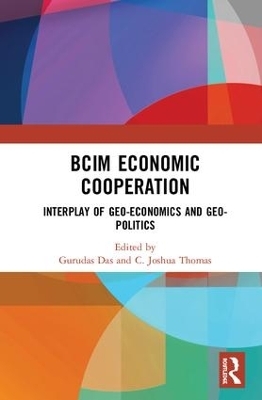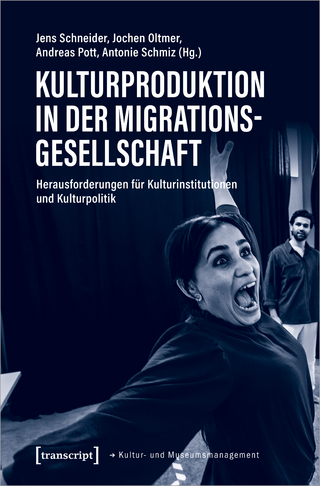
BCIM Economic Cooperation
Routledge India (Verlag)
978-1-138-57046-7 (ISBN)
This book examines the strategic and economic logic behind the Bangladesh–China–India–Myanmar (BCIM) Regional Cooperation. According to estimates, BCIM covers approximately 9 percent of the world’s mass and 40 percent of the world’s population spanning across four countries, constituting the confluence of East, Southeast and South Asia. It contributes about 13 percent to world trade but ironically only 5 percent to inter-regional trade. This volume compares the various approaches to cooperation – trade-led vs project-led, geo-political vs geo-strategic, Sino-centric vs India-led.
The chapters explore the complex interplay of geo-economics and geo-politics associated with BCIM sub-regional cooperation in general, and the BCIM Economic Corridor (BCIM-EC) in particular. It points to the current challenges that impede globalisation and economic growth, and critically reviews implications for the stakeholders, institutional frameworks and the spatial impact of the Corridor, especially on the underdeveloped regions. The book discusses the geo-political, geo-economic and geo-strategic advantages that will accrue to the member countries once the sub-regional cooperation becomes fully functional. It advocates the adoption of best practices from similar sub-regional groupings across the globe.
This book will be of great interest to scholars and researchers of politics and international relations, geo-politics, strategic studies, sub-regional cooperation, South Asian studies, India–China relations, foreign trade and economics, besides those dealing with foreign policy and development cooperation. It will especially benefit policymakers, development agencies and strategic think tanks.
Gurudas Das is Professor of Economics, Department of Humanities and Social Sciences, National Institute of Technology Silchar, Assam, India. C. Joshua Thomas is Deputy Director, Indian Council of Social Science Research, North Eastern Regional Centre, NEHU Campus, Shillong, Meghalaya, India.
Lists of Figures and Tables. Contributors. Introduction Gurudas Das and C Joshua Thomas. Part I: BCIM Sub-Regional Cooperation Chapter 1. BCIM: What should be the Basis for Sub-Regional Cooperation? Gurudas Das, Tanuj Mathur, Ujjwal Paul and Subodh Chandra Das Chapter 2. Potential of BCIM Growth Area: Its Implication on India-China Trade Biswajit Nag and Rahul Nath Choudhury Chapter 3. The Road Ahead for the BCIM: Leveraging on Sub-Regionalism and Other Experiences Laldinkima Sailo Chapter 4. Institutional Arrangements for BCIM: Challenges, Guiding Principles, Short- and Long-Term Agenda Chapter 5. The BCIM Forum: Tracing the Historical Basis Part II: BCIM Economic Corridor Chapter 6. Is BCIM-EC beneficial for India? Chapter 7. BCIM Economic Corridor: A Trade-led Initiative Chapter 8. Trade and Investment along BCIM Economic Corridor: Realising Sustainable Economic Returns Chapter 9. The BCIM Economic Corridor: Does it Subsume the BCIM Regional Cooperation Forum? Chapter 10. BCIM Economic Corridor: Opportunities, Obstacles, Options and the Road Ahead Part III: BCIM and India’s Northeast Chapter 11. Northeast India in BCIM Economic Corridor: Rhetoric and Reality Chapter 12. ‘Northeast’ in India’s ‘Act East’: A Reality Check Part IV: Geo-economics of BCIM Chapter 13. BCIM Economic Corridor and Northeast India: Need for Inclusive Development Agenda Chapter 14. Can New Myanmar Contribute to BCIM Integration? Chapter 15. BCIM Sub-regional Economic Corridor: Will it be a Game Changer? Chapter 16. The BCIM Corridor: Geo-Economic Prospects Chapter 17. One More Step from Temporary to Permanent: BCIM Sub-Regional Cooperation and its Institutional Platform Chapter 18. BCIM Sustainability Dialogue(s): A Network Approach to Capacity Building Chapter 19. The BCIM: Understanding the Geopolitical Dynamic Chapter 20. BCIM: The Geo-economics, Geo-politics and the New Contexts of Asia’s Regionalism Chapter 21. Evolving Dynamics of India-China Relations: Implications for BCIM Chapter 22. China’s Two Regional Framework Narratives: BCIM and CPEC – Comparative Viabilities Conclusion OBOR Architecture and BCIM-EC: An Interplay of Geo-economics and Geo-politics. Index.
| Erscheinungsdatum | 18.09.2018 |
|---|---|
| Zusatzinfo | 38 Tables, black and white; 10 Line drawings, black and white; 10 Illustrations, black and white |
| Verlagsort | London |
| Sprache | englisch |
| Maße | 138 x 216 mm |
| Gewicht | 680 g |
| Themenwelt | Sozialwissenschaften ► Politik / Verwaltung ► Allgemeines / Lexika |
| Sozialwissenschaften ► Politik / Verwaltung ► Europäische / Internationale Politik | |
| Wirtschaft ► Volkswirtschaftslehre ► Makroökonomie | |
| Wirtschaft ► Volkswirtschaftslehre ► Wirtschaftspolitik | |
| ISBN-10 | 1-138-57046-X / 113857046X |
| ISBN-13 | 978-1-138-57046-7 / 9781138570467 |
| Zustand | Neuware |
| Informationen gemäß Produktsicherheitsverordnung (GPSR) | |
| Haben Sie eine Frage zum Produkt? |
aus dem Bereich


